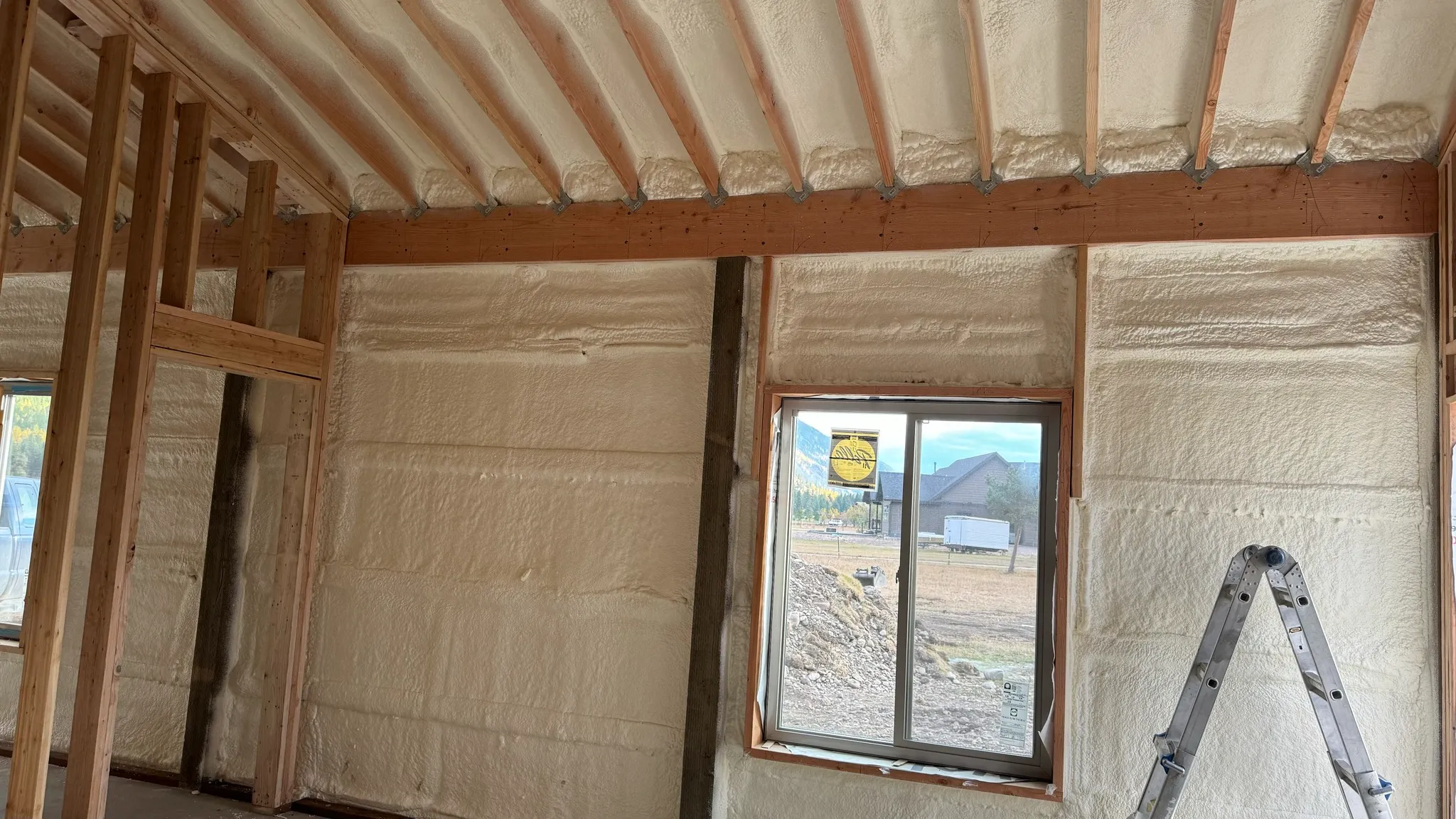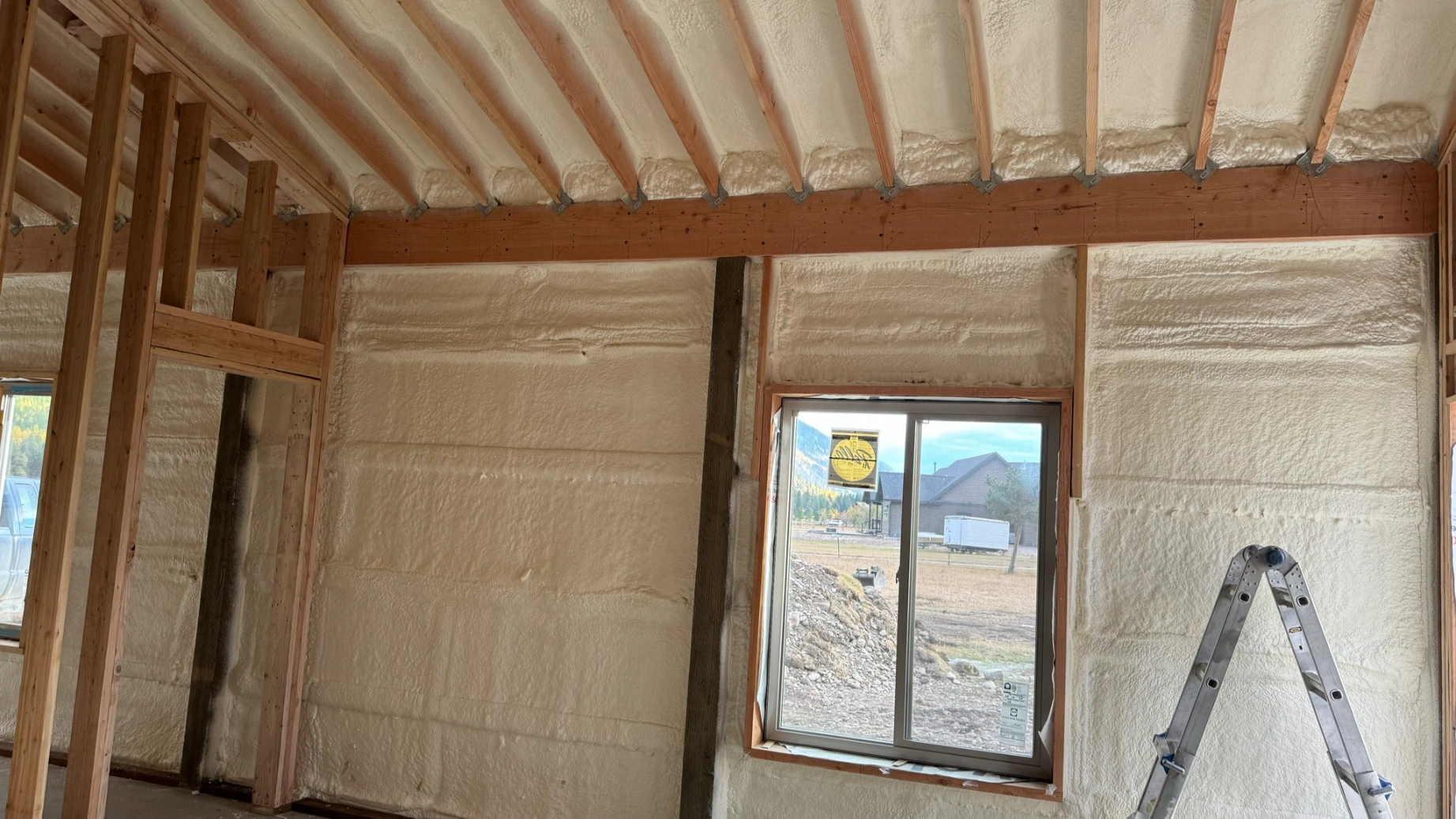

Insulation is one of those out-of-sight, out-of-mind materials in a home, but its performance directly impacts your comfort and your wallet. Every homeowner should check their insulation every few years because, like any building material, it degrades over time. Factors like moisture, pests, compression, and simple settling can reduce its effectiveness, leading to reduced efficiency, inconsistent temperatures, and even potential moisture damage to your home’s structure. A quick, regular inspection can catch these problems before they become expensive repairs.
This guide comes from years of experience seeing firsthand what happens when insulation is neglected. It offers a straightforward approach to help you understand the warning signs of failing insulation, the benefits of staying proactive, and how to conduct a basic assessment of your own home.
You don’t need to be an expert to spot the clues of underperforming insulation. Often, your home will tell you something is wrong through subtle and not-so-subtle signs. Paying attention to these indicators is the first step in protecting your home and budget.
One of the most common signs is a sudden or gradual increase in your heating and cooling costs that you can’t explain. Because insulation’s main job is to resist heat flow, degraded material forces your HVAC system to work harder to maintain a stable temperature. If your energy usage is creeping up without a change in your habits, your insulation is a likely culprit.
Do some rooms feel stuffy in the summer while others are freezing in the winter? Are you constantly adjusting the thermostat? Uneven temperatures and drafts are classic symptoms of insulation failure. Gaps, thin spots, or settled insulation create thermal bridges where heat can easily escape or enter, leading to these uncomfortable hot and cold spots.
A visual check can reveal a lot. When you look at the insulation in your attic or crawl space, keep an eye out for:
Bonus Tip: In addition to a visual inspection, a quick way to check for air leaks is to hold a lit incense stick near window frames, electrical outlets, and attic hatches on a windy day. If the smoke wavers or is drawn in a direction, you have an air leak that is compromising your insulation’s performance.
Proactively managing your home’s insulation is an investment that pays off. The benefits go far beyond just feeling more comfortable.
Properly insulating a home is one of the most practical ways to reduce energy consumption. According to the U.S. Department of Energy, homeowners can save an average of 15% on heating and cooling costs by air sealing their homes and adding insulation. Regular checks ensure you continue to get these savings year after year. The reality is that a significant number of U.S. homes are under-insulated, a fact pointed out by the North American Insulation Manufacturers Association, meaning many homeowners are already paying more than they need to.
Beyond saving money, well-maintained insulation creates a more pleasant living environment. It helps eliminate drafts, reduces temperature swings between floors and rooms, and can even dampen outside noise. This creates a consistently comfortable space without having to constantly fiddle with the thermostat.
You can perform a basic visual inspection yourself. Use this checklist as a guide, and always remember to wear protective gear like a mask, gloves, and long sleeves when entering attics or crawl spaces.
| Area to Check | What to Look For | Potential Issue |
|---|---|---|
| Attic | Insulation level below the top of the floor joists; dark or stained spots; compressed or matted areas; visible pest nests. | Insufficient R-value; moisture intrusion from a roof leak; lost thermal resistance; pest infestation. |
| Walls | Drafts around electrical outlets and switch plates; peeling paint near the ceiling or baseboards. | Gaps in wall insulation, air leakage, and potential moisture problems. |
| Crawl Space/Basement | Fallen or sagging insulation batts between floor joists; damp or musty smells; visible mold on insulation or wood. | Poor installation, high moisture levels, inadequate ventilation, and insulation failure. |
| Ductwork | Exposed or torn insulation wrap on HVAC ducts in unconditioned spaces like attics or crawl spaces. | Energy loss from ducts makes your HVAC system less efficient. |

If your inspection reveals potential problems, it’s good to understand a few factors before deciding on the next steps. The right solution depends on your home, climate, and the type of insulation you have.
Different materials have different characteristics. Common types include:
R-value measures an insulation’s ability to resist heat flow. The right R-value for your home depends on your location. A resource like the guide from ENERGY STAR shows recommended home insulation R-values based on different climate zones in the United States. Checking this can tell you if your attic is under-insulated, even if the material itself seems to be in good condition.
A visual check is something most homeowners can do. You can easily top up some loose-fill insulation in an accessible attic. However, for issues like widespread moisture, suspected mold, significant pest damage, or work in tight spaces, a professional assessment is the safer and more effective option. Professionals have the tools to measure performance accurately and identify the root cause of the problem.
Checking your insulation every few years is a simple but effective part of home maintenance. It allows you to catch minor issues before they lead to high energy bills, uncomfortable rooms, or costly structural damage. By using the signs and checklist provided, you can better understand your home’s condition and make informed decisions to keep it efficient and comfortable for years to come.
If your inspection raises concerns or you want a more detailed evaluation, consider a professional consultation. An expert can use specialized equipment to pinpoint air leaks and measure thermal performance accurately. For homeowners who decide they need professional help, the team at Wegner Insulation is available to assist. You can get in touch by calling (406) 654-4636 or by sending an email to [email protected] to discuss your home’s specific needs.
The lifespan varies by material. Fiberglass and cellulose can last for many decades but become less effective if they get wet or compressed. Spray foam insulation generally lasts for the life of the home if it’s not physically damaged.
In many cases, yes. If the existing insulation is dry and in decent condition, you can add more on top, a process called “capping.” However, any wet or moldy insulation should always be removed completely before new material is installed.
A simple way is to look at the floor joists. If the insulation is level with or below the joists, you probably need more. The goal is a thick, even blanket of insulation covering the joists entirely.
Closed-cell spray foam is very durable and resistant to moisture, so it does not degrade in the same way as other materials. Its performance remains stable over its lifetime. Open-cell foam can be affected by moisture if it is directly exposed to a leak.
Yes. Insulation contaminated with mold can harm your home’s air quality. Material with rodent droppings can also present health risks. This is why wearing protective gear is so important during an inspection.


